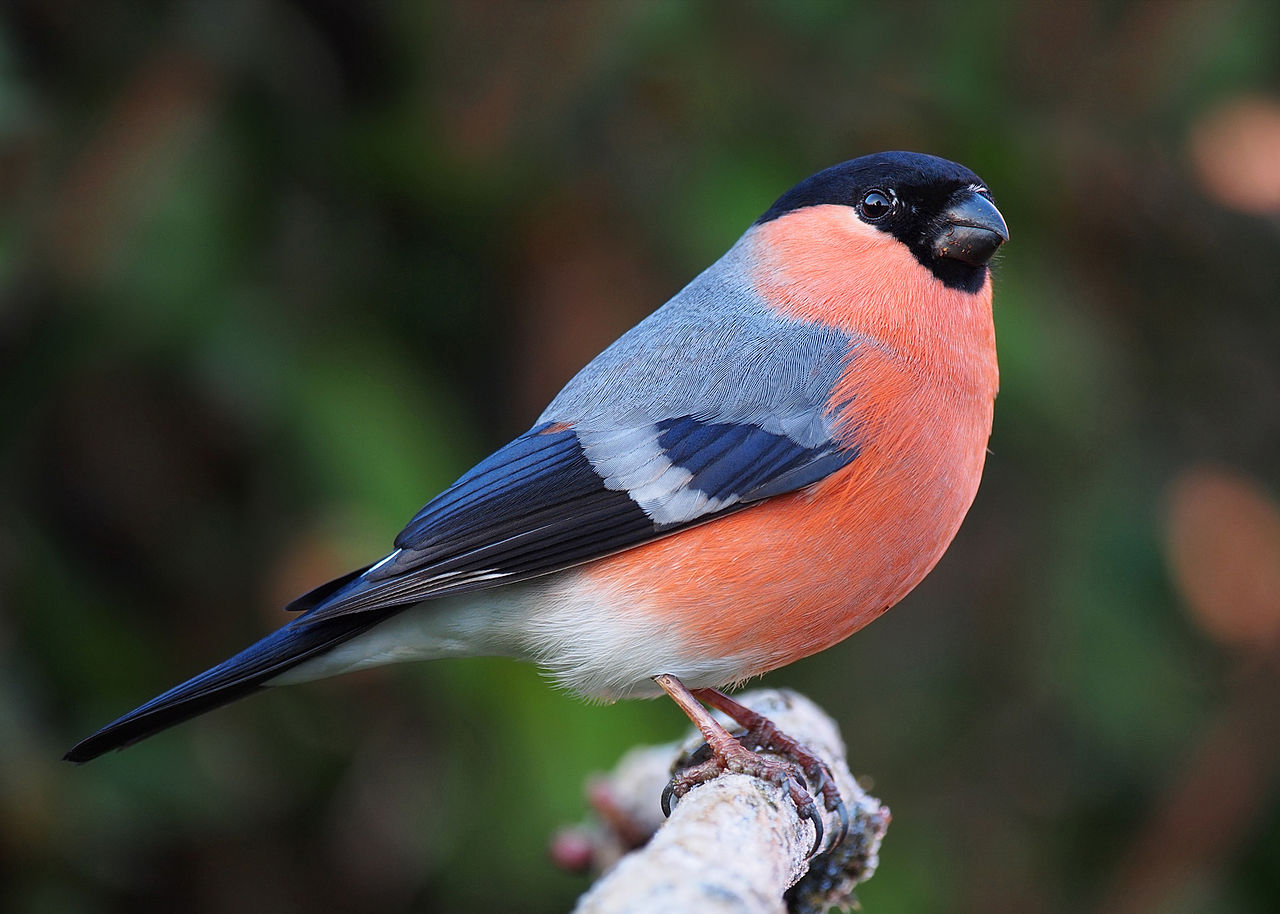- Home
- Garden Science
- Myths
- Gardens poor for conservation?
Only common species live in gardens so they are not important for conservation
The expression “common or garden” does gardens a great disservice, suggesting gardens don’t have interesting or important species. We know gardens contain LOTS of plant, animal and fungus species, in fact the harder people look the more they find. Gardens routinely support 29 animal and 16 plant species on the UK Biodiversity Action Plan lists. Both the Natural History Museum’s and Jennifer Owen’s gardens proved to contain species new to Britain and even to science.
The bullfinch and common toad are threatened species which benefit from garden habitats. Both have Species Action Plans in the UK.
Some species in Britain and Ireland are adapted to special and challenging habitats, such as mountain tops, acidic bogs, dense woodland, reedbeds, saltmarshes or chalk downland. If your garden doesn’t contain such habitats, you are not going to find these specialist species, many of which are now rare because their habitats are fast declining. But most species are less particular in their choice, and providing your garden is within their distribution range, they might accept your invitation to move in.
We must get rid of the notion that conservation is only about saving threatened species! It is about saving all of nature, and this definitely includes the more common species that are key to how ecosystems operate. Most previously abundant species such as frogs, hedgehogs and sparrows are declining in the countryside, so the help that gardens can provide is important.
Gardens cover an area one fifth the size of Wales, and each one comes with dedicated gardeners collectively managing a massive nature reserve network connecting all of Britain. This will be vital when climate change impacts become more severe and species will need stepping-stones to migrate through our landscape to find new places to live.
Governments, planners and many ecologists still don’t appreciate the biodiversity richness and conservation importance of gardens. They are rarely included in strategic thinking about conservation policy. This is something the Wildlife Gardening Forum is determined to change! See our page on Gardens and Conservation for more evidence.
Page written by Steve Head: Reviewed by Ken Thompson
Only common species live in gardens so they are not important for conservation
The expression “common or garden” does gardens a great disservice, suggesting gardens don’t have interesting or important species. We know gardens contain LOTS of plant, animal and fungus species, in fact the harder people look the more they find. Gardens routinely support 29 animal and 16 plant species on the UK Biodiversity Action Plan lists. Both the Natural History Museum’s and Jennifer Owen’s gardens proved to contain species new to Britain and even to science.
Only common species live in gardens so they are not important for conservation
The expression “common or garden” does gardens a great disservice, suggesting gardens don’t have interesting or important species. We know gardens contain LOTS of plant, animal and fungus species, in fact the harder people look the more they find. Gardens routinely support 29 animal and 16 plant species on the UK Biodiversity Action Plan lists. Both the Natural History Museum’s and Jennifer Owen’s gardens proved to contain species new to Britain and even to science.
Only common species live in gardens so they are not important for conservation
The expression “common or garden” does gardens a great disservice, suggesting gardens don’t have interesting or important species. We know gardens contain LOTS of plant, animal and fungus species, in fact the harder people look the more they find. Gardens routinely support 29 animal and 16 plant species on the UK Biodiversity Action Plan lists. Both the Natural History Museum’s and Jennifer Owen’s gardens proved to contain species new to Britain and even to science.

The bullfinch and common toad are threatened species which benefit from garden habitats. Both have Species Action Plans in the UK.
Some species in Britain and Ireland are adapted to special and challenging habitats, such as mountain tops, acidic bogs, dense woodland, reedbeds, saltmarshes or chalk downland. If your garden doesn’t contain such habitats, you are not going to find these specialist species, many of which are now rare because their habitats are fast declining. But most species are less particular in their choice, and providing your garden is within their distribution range, they might accept your invitation to move in.
We must get rid of the notion that conservation is only about saving threatened species! It is about saving all of nature, and this definitely includes the more common species that are key to how ecosystems operate. Most previously abundant species such as frogs, hedgehogs and sparrows are declining in the countryside, so the help that gardens can provide is important.
Gardens cover an area one fifth the size of Wales, and each one comes with dedicated gardeners collectively managing a massive nature reserve network connecting all of Britain. This will be vital when climate change impacts become more severe and species will need stepping-stones to migrate through our landscape to find new places to live.
Governments, planners and many ecologists still don’t appreciate the biodiversity richness and conservation importance of gardens. They are rarely included in strategic thinking about conservation policy. This is something the Wildlife Gardening Forum is determined to change! See our page on Gardens and Conservation for more evidence.
Page written by Steve Head: Reviewed by Ken Thompson















